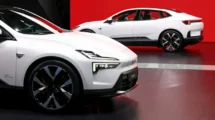Washington, USA: With a couple of more Mars orbiter launched last year which includes India’s MOM probe, traffic has increased around Mars. This has resulted in NASA beefing up its traffic tracking procedure to prevent collisions of spacecraft.
The US space agency has strengthened a procedure of traffic tracking, communication, and maneuver planning to make sure that Mars orbiters do not come close to each other.
As per NASA, last year’s increase of two near spacecraft moving around Mars made the number of active Mars orbiters five which is maximum ever.
India’s Mars Orbiter Mission and NASA’s Mars Atmosphere and Volatile Evolution (MAVEN) gave company to the 2003 Mars Express from the European Space Agency (ESA) and two from NASA: the 2006 Mars Reconnaissance Orbiter (MRO) and the 2001 Mars Odyssey.
The currently improved collision avoidance procedure also monitors the place of NASA’s Mars Global Surveyor a 1997 orbiter that has ceased working. It’s just not the count that is important but the type of orbits that missions utilize for meeting their science objectives.
Robert Shotwell, Mars program chief engineer at NASA, said earlier collision avoidance was jointly managed between the MRO as well as the Odyssey navigation teams. There were less chances of an issue. MAVEN’s very elliptical orbit coming into the altitudes of other orbits, alters the probability that someone will require to do a maneuver for collision-avoidance.
Shotwell added that they track the orbiters much more closely. There’s still a chance of requiring a maneuver but is something we require to handle.
Traffic management at the red planet is simpler than that of Earth where over 1,000 orbiters are active apart from more chunks of inactive hardware.
As there is increased Mars exploration further precautions will need to be taken. All 5 active Mars orbiters utilize the monitoring and communications features of NASA’s Deep Space Network. This consolidates trajectory data and engineers are able to simulate future trajectories for preventing measures.





